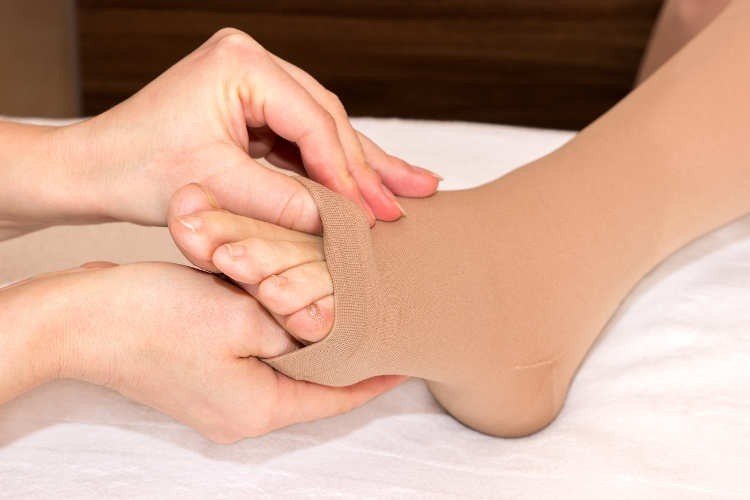All That You Need To Know About Compression Garments For Lymphedema

Compression garments for lymphedema patients are garments used to assist minimize an unhealthy accumulation of lymphatic fluid in various parts of the body as a consequence of anomalies in the lymphatic system. Compression garments for lymphedema patients. In addition to malignancies of the head, neck and breast, lymphedema may also be caused by tumors of the lymphatic system. Lymphedema may be life-threatening in rare situations because of the pain, swelling, and heaviness it causes in the affected areas, as well as the inability to move freely. The compression garments for lymphedema should be used to keep fluid from building up in the arms, legs, or feet of those with the condition. Lymphedema clothing is made to fit the specific parts of the body that are afflicted by it.
Different Styles And More
Lymphedema compression garments come in a variety of styles to provide effective treatment of all affected areas. There are a wide variety of lymphedema sleeves on the market, with some giving additional hand and foot support as needed. A variety of compression sleeves are available, some of which are intended for the lower extremities, such as the forearm and calf, while others are meant to be worn over the whole arm or leg.
For The Patients Now
Patients with lymphedema and their physicians must make sure that their compression garments are in top functional condition. Compression garments for lymphedema sufferers are made of a material that is very elastic. As long as the patient’s limbs are correctly supported and squeezed, this material may aid in the normal movement of lymphatic fluid.
When putting on and removing compression gear
Instructions on how to insert and remove the compression garment will be sent after your appointment. To produce arm sleeves, fold the garment in half from the top to the elbow or until the garment is completely folded in half. A doorknob or handle might potentially be used to help you keep your balance. Pulling on the sleeve will cause the sleeves to rise up your arm.
Until you reach your ankle or heel, you might benefit from wearing your stockings with the inside out.
Compression garments should be worn and removed in accordance with the following guidelines:
- First thing in the morning, when you put your clothes on, the limb will be the smallest it has ever been. After having a shower or bath, it’s best to wait a few minutes before getting dressed. If your skin is wet, it may be difficult to apply your makeup properly.
- In order to remove the cloth, you should begin by wrapping the cloth around your hand or foot, then gradually sliding it out of your grasp. Don’t pull it up by the top if you don’t have to.
- The top cannot be flipped or rolled. Reduced blood flow and edema will occur as a consequence of this.
- Unscented talc applied on the arm or leg may make it simpler to put on your clothes in the future. Putting on and taking off garments may be made easier using a number of accessories. Your lymphedema specialist should be able to provide you the names and numbers of local companies that sell these products.
- The material should be evenly spread and there should be no creases when you put your clothes on. Put on the garment with the help of a rubber glove to avoid any creases that may form. If you are wearing an arm sleeve, it is advised that you wear the glove on the opposite hand.
- Moisturize your skin with a mild moisturiser when you remove your garments at night. The cream makes it difficult to put on the sleeve or stocking in the morning, therefore it should be done at night.
- If you notice a shift in feeling after being fitted for a garment, it may be because the garment is excessively tight. Warning indicators include the following:
- These include numbness, discomfort and a change in the colour of your finger or toe.
- You should immediately remove the garment and talk with your lymphedema specialist if you notice any of the following symptoms: If you want to prevent this, make sure you’re properly sized and fitted.
Now lymphedema compression garments help to maintain a healthy lymphatic system while also alleviating some of the symptoms that go along with it. For patients with lymphedema, fibrosis and impaired muscular function may occur if treatment is not sought.










